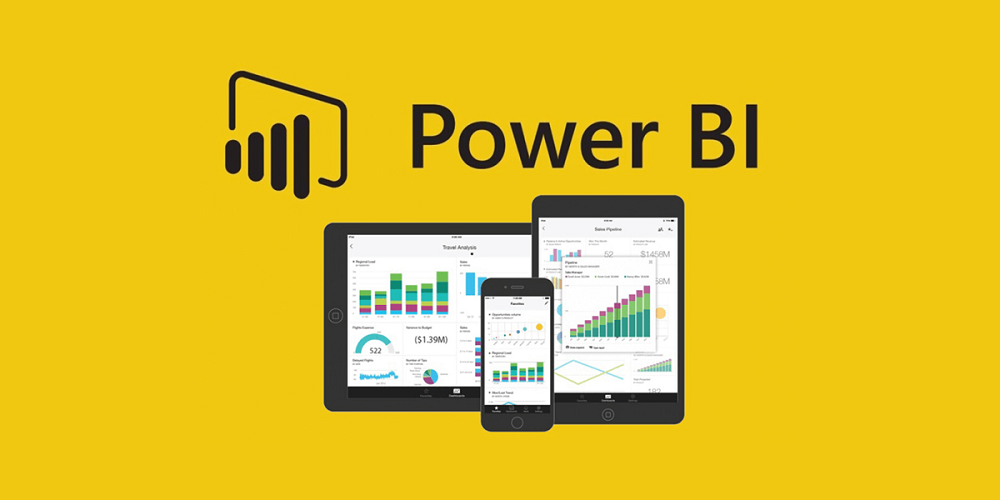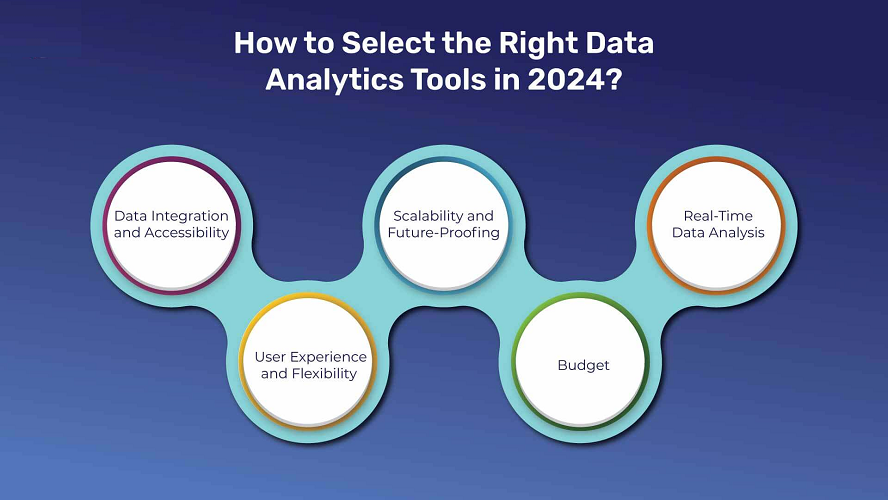Top 10 Data Analytics Platform in the World

In today’s data-centric world, organizations of all sizes are making data-driven decisions. With vast amounts of data being collected every day, there is a need for data analysis tools to make sense of the data. That is one of the reasons organizations invest in an analytics platform. The right platform provides users the ability to collect, process, analyze, and visualize their data in a manner that generates insights leading to actionable results. The right analytics platform is critically important for any organization whether they are a startup or a large, multinational organization.
Below is a well-curated list of the top 10 data analytics platforms leading the global market according to their features, user experience, scalability, and customer adoption in their respective industries.
10. Sisense
Sisense is an end-to-end business intelligence platform that focuses on embedded analytics and customization. Its powerful API allows developers to build tailored analytics experiences into applications.
Key Features:
- In-chip technology for fast processing
- Embedded analytics
- Drag-and-drop interface
- White-labeling capabilities
- AI-enhanced insights
Why It Stands Out:
Sisense allows developers to integrate analytics directly into apps and products, making it perfect for tech companies and SaaS providers. It provides full control over how data is visualized and consumed.
9. Oracle Analytics Cloud
Part of the Oracle ecosystem, Oracle Analytics Cloud provides robust tools for reporting, dashboards, and advanced analytics. It supports AI and machine learning models natively.
Key Features:
- Machine learning integration
- Self-service data visualization
- Natural language queries
- Predictive analytics
- Extensive data connectors
Why It Stands Out:
Oracle Analytics Cloud is highly scalable and integrates perfectly with Oracle’s database and cloud infrastructure. It’s ideal for enterprise users who need both depth and breadth in analytics.
8. Domo
Domo is a cloud-native platform that provides real-time analytics and business intelligence in a highly visual format. It’s designed for speed, simplicity, and scalability.
Key Features:
- Real-time data pipelines
- Social collaboration features
- App-building capabilities
- Over 1000 pre-built connectors
- Machine learning tools
Why It Stands Out:
Domo isn’t just about dashboards — it also allows organizations to build full-scale business apps powered by data. This makes it incredibly versatile, especially for fast-moving businesses and startups.
7. SAS Visual Analytics
SAS is a long-standing name in analytics and statistical modeling. Its Visual Analytics platform brings the power of advanced analytics into a visually intuitive interface.
Key Features:
- AI and machine learning capabilities
- Forecasting and predictive analytics
- Mobile and cloud-based dashboards
- Integration with open-source tools
- High-grade security and governance
Why It Stands Out:
SAS is known for its statistical rigor and is preferred in domains like healthcare, pharmaceuticals, and government. The platform supports deep analytics while remaining accessible to business users.
6. SAP BusinessObjects
SAP BusinessObjects is one of the oldest and most comprehensive analytics tools in the industry. It offers enterprise-level reporting, dashboarding, and data visualization functionalities.
More Read: Etesportech Gaming
Key Features:
- High-volume data processing
- Integration with SAP ERP systems
- Ad hoc reporting tools
- Semantic layer for business users
- On-premise and cloud deployment
Why It Stands Out:
This tool is perfect for companies already using SAP solutions. Its robust infrastructure makes it well-suited for regulated industries where audit trails and data lineage are essential.
5. Qlik Sense
Qlik Sense offers a unique associative data model that allows users to explore data from multiple angles. It’s designed for self-service analytics, giving users the freedom to dive deep into their data without needing a technical background.
Key Features:
- Associative data engine
- Smart search and AI
- Augmented analytics
- Mobile and multi-cloud support
- Real-time collaboration
Why It Stands Out:
Unlike traditional query-based tools, Qlik’s associative engine enables non-linear exploration, letting users discover hidden insights and relationships in data. It’s a true self-service platform that democratizes data.
4. IBM Cognos Analytics
IBM Cognos is a mature platform that blends traditional reporting with modern AI-powered analytics. It’s trusted by enterprises for its robust security, scalability, and customization options.
Key Features:
- AI-infused data preparation
- Drag-and-drop reporting
- Predictive analytics
- Integrated dashboarding
- Multilingual support
Why It Stands Out:
IBM Cognos is ideal for large enterprises with complex data environments. The tool offers excellent governance and advanced data integration features that cater to a variety of industries, including finance and healthcare.
3. Google Looker (formerly Looker)
Now part of Google Cloud, Looker is a powerful analytics platform built for modern business intelligence. It focuses heavily on data modeling and integrates directly with cloud databases.
Key Features:
- Web-based platform
- Real-time data modeling using LookML
- Strong API support
- Embedded analytics
- Seamless Google Cloud integration
Why It Stands Out:
Looker is especially useful for companies operating in the cloud. It emphasizes data governance and centralizes business metrics, making it an excellent tool for ensuring consistency across departments.
2. Tableau
Tableau, now owned by Salesforce, is known for its visually stunning dashboards and ability to handle massive datasets with ease. It’s especially popular among business analysts and data visualization experts.
Key Features:
- Intuitive drag-and-drop interface
- Advanced visualization options
- Integration with hundreds of data sources
- AI-powered data analysis
- Strong community support
Why It Stands Out:
Tableau allows users to create complex visualizations without coding, which makes it ideal for storytelling with data. Furthermore, it allows for real-time collaboration, making it one of the best tool for team based initiatives.
1. Microsoft Power BI
Microsoft Power BI is one of the most user-friendly and feature-rich data analytics tools in the market. As it connects with other Microsoft applications like Excel, Azure and Teams, it would be a perfect fit for businesses that are already using Microsoft tools.

Key Features:
- Drag-and-drop data visualization
- Natural language queries
- Real-time dashboards
- Mobile accessibility
- Strong data connectors for external services
Why It Stands Out:
Power BI offers a powerful combination of simplicity and capability. Users can go from data to insight to decision without needing a background in data science. It’s especially beneficial for non-technical teams and managers.
Comparative Matrix: Platform vs. Capabilities
Here’s a side-by-side comparison of the 10 platforms across core dimensions:
| Platform | Ease of Use | Integration | Real-Time Analytics | AI/ML Support | Best For |
| Power BI | ⭐⭐⭐⭐⭐ | ⭐⭐⭐⭐⭐ | ⭐⭐⭐⭐ | ⭐⭐⭐⭐ | SMBs, Enterprises |
| Tableau | ⭐⭐⭐⭐ | ⭐⭐⭐⭐ | ⭐⭐⭐⭐⭐ | ⭐⭐⭐⭐ | Analysts, Visual Storytelling |
| Looker | ⭐⭐⭐⭐ | ⭐⭐⭐⭐⭐ | ⭐⭐⭐⭐⭐ | ⭐⭐⭐⭐ | Cloud-first teams |
| IBM Cognos | ⭐⭐⭐ | ⭐⭐⭐⭐ | ⭐⭐⭐ | ⭐⭐⭐⭐ | Large Enterprises |
| Qlik Sense | ⭐⭐⭐⭐ | ⭐⭐⭐⭐ | ⭐⭐⭐⭐ | ⭐⭐⭐⭐ | Data Discovery |
| SAP BusinessObjects | ⭐⭐⭐ | ⭐⭐⭐⭐ | ⭐⭐ | ⭐⭐⭐ | SAP users, Enterprises |
| SAS Visual Analytics | ⭐⭐⭐⭐ | ⭐⭐⭐⭐ | ⭐⭐⭐ | ⭐⭐⭐⭐⭐ | Healthcare, Finance, Research |
| Domo | ⭐⭐⭐⭐⭐ | ⭐⭐⭐⭐⭐ | ⭐⭐⭐⭐⭐ | ⭐⭐⭐⭐ | Startups, Mobile-first teams |
| Oracle Analytics | ⭐⭐⭐⭐ | ⭐⭐⭐⭐⭐ | ⭐⭐⭐⭐ | ⭐⭐⭐⭐⭐ | Large Corporations |
| Sisense | ⭐⭐⭐⭐ | ⭐⭐⭐⭐ | ⭐⭐⭐⭐ | ⭐⭐⭐⭐ | Developers, SaaS providers |
Insights from the Comparison
- Power BI and Domo lead in user-friendliness and mobile capability.
- Oracle, SAS, and IBM Cognos dominate in AI/ML and enterprise-grade analytics.
- Sisense and Looker shine in embedded and real-time analytics for developers and product teams.
Emerging Trends in Data Analytics Platforms
The world of analytics is evolving rapidly, and these are the key trends shaping the future of every top-tier analytics platform:
1. AI-Powered Insights
Platforms are increasingly integrating AI to perform tasks like:
- Automatic data prep and cleansing
- Predictive modeling
- Natural language querying (NLQ)
This trend is visible in Power BI’s Q&A feature, Tableau’s Einstein Discovery, and Oracle’s ML modules.
2. Embedded & White-Label Analytics
Companies are demanding seamless integration of analytics within their own apps. Sisense and Looker lead here, offering strong APIs for embedding.
3. Real-Time Decision Making
Modern businesses need live dashboards. Platforms like Domo, Qlik Sense, and Looker offer real-time data pipelines, ideal for time-sensitive environments like logistics and ecommerce.
4. Low-Code/No-Code Features
Platforms are simplifying analytics by introducing drag-and-drop interfaces and no-code customizations, empowering business users. This is especially well-executed in Power BI, Tableau, and Domo.
5. Cloud-Native Analytics
Cloud-first platforms like Looker and Domo are gaining ground as organizations migrate from on-premise solutions. Integration with Google Cloud, AWS, and Azure is becoming essential.
Use-Case Based Recommendations
Different businesses have different needs. Below are tailored platform suggestions depending on your business goals, size, and industry:
Startups & Small Businesses
Recommended Platforms:
- Power BI – Affordable, easy to use, and integrates well with Excel and Office 365.
- Domo – Offers fast deployment, mobile-friendly dashboards, and social collaboration features.
Enterprises and Large Corporations
Recommended Platforms:
- IBM Cognos Analytics – Strong governance and robust security.
- Oracle Analytics Cloud – Excellent for companies already using Oracle DB or ERP systems.
- SAP BusinessObjects – Seamless for SAP ERP users with legacy systems.
Data-Intensive Companies
Recommended Platforms:
- Qlik Sense – Powerful associative engine to uncover hidden relationships.
- SAS Visual Analytics – Excellent for statistical modeling, predictive analysis.
Marketing & Sales Teams
Recommended Platforms:
- Tableau – Best for visual storytelling, custom dashboards.
- Power BI – Integration with Microsoft Dynamics, SharePoint, and Excel.
Developers & SaaS Providers
Recommended Platforms:
- Sisense – Highly customizable with strong developer tools and API access.
- Looker – Clean architecture for embedding and data modeling.
Healthcare, Finance, and Government
Recommended Platforms:
- SAS Visual Analytics – Trusted for regulatory compliance and precision analytics.
- IBM Cognos Analytics – Audit trails, multilingual reporting, and secure access.
How to Choose the Right Analytics Platform

Integration Compatibility
Check whether the platform integrates easily with your current databases, CRMs, or cloud storage.
Data Security & Compliance
Look for platforms with strong access controls and audit trails.
User Skill Level
Some tools require SQL knowledge or experience with data modeling. Make sure the platform matches your team’s skill set.
Scalability
Ensure the platform can handle your current data volume and grow with your business needs.
Visualization Needs
If your goal is high-impact dashboards, focus on platforms like Tableau and Power BI that excel in design and interactivity.
Final Thoughts: The Future of Analytics
The rise of self-service analytics, AI-assisted decision-making, and real-time dashboards means businesses can no longer afford to ignore the importance of having the right analytics platform. Whether you’re looking to forecast revenue, optimize marketing, or uncover hidden patterns in your supply chain — your success depends on how well you leverage your data.
All 10 platforms discussed are industry leaders, but the right choice depends on your unique objectives. Think of analytics not just as a tool, but as a core part of your business strategy.
Key Takeaways:
- Choose Power BI or Tableau for usability and rapid dashboard development.
- Use Looker or Sisense for embedded analytics and developer control.
- Select SAS or Oracle for robust AI and predictive capabilities.
- Opt for Qlik Sense if you need data discovery and flexible navigation.
- Prefer Domo for modern, cloud-native teams who need instant insights.





